How Much Does Facebook Ads Cost? The Comprehensive Guide in 2024
Facebook has a similar strategy to the other online advertising networks. They don’t give you a price quote when you want to advertise on their website. Instead, you can note that the quality of your Facebook ads varies depending on a variety of factors.
Moz found some eye-opening statistics on the comparative costs of reaching people through different types of media. Although the 2014 figures are a bit old now, they still provide a clear image of where Facebook’s advertising costs are relative to the competition.
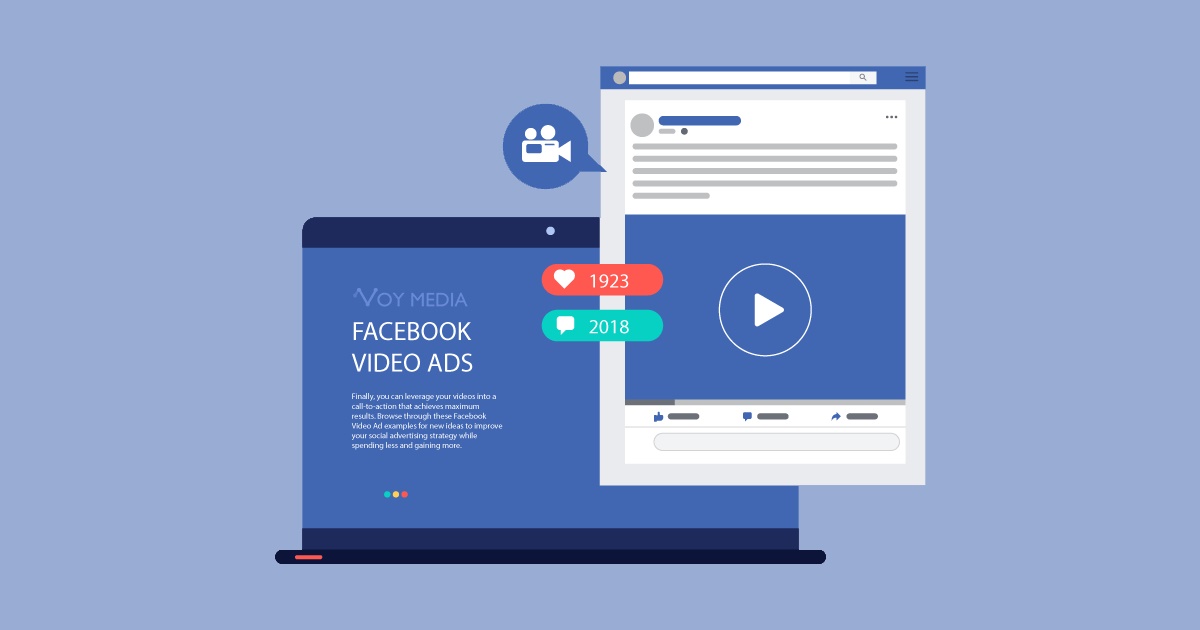
Moz discovered that the costs per media type to reach 1,000 people are as below:
- Newspaper - $32.00
- Radio - $8.00
- Magazine - $20.00
- Cable TV - $7.00
- LinkedIn Ads - $0.75
- Google AdWords - $2.75
- Facebook Ads - $0.25
The cost of your Facebook advertising would be the amount you ‘re willing to pay. It’s not so much a case of how much it would cost you to advertise, as it is, how many advertisements will you get for your money? Of course, if you bid too low, you ‘re not going to spend your entire budget, because there’s always someone willing to pay more than you.
How Ads on Facebook are charged
Facebook Bidding
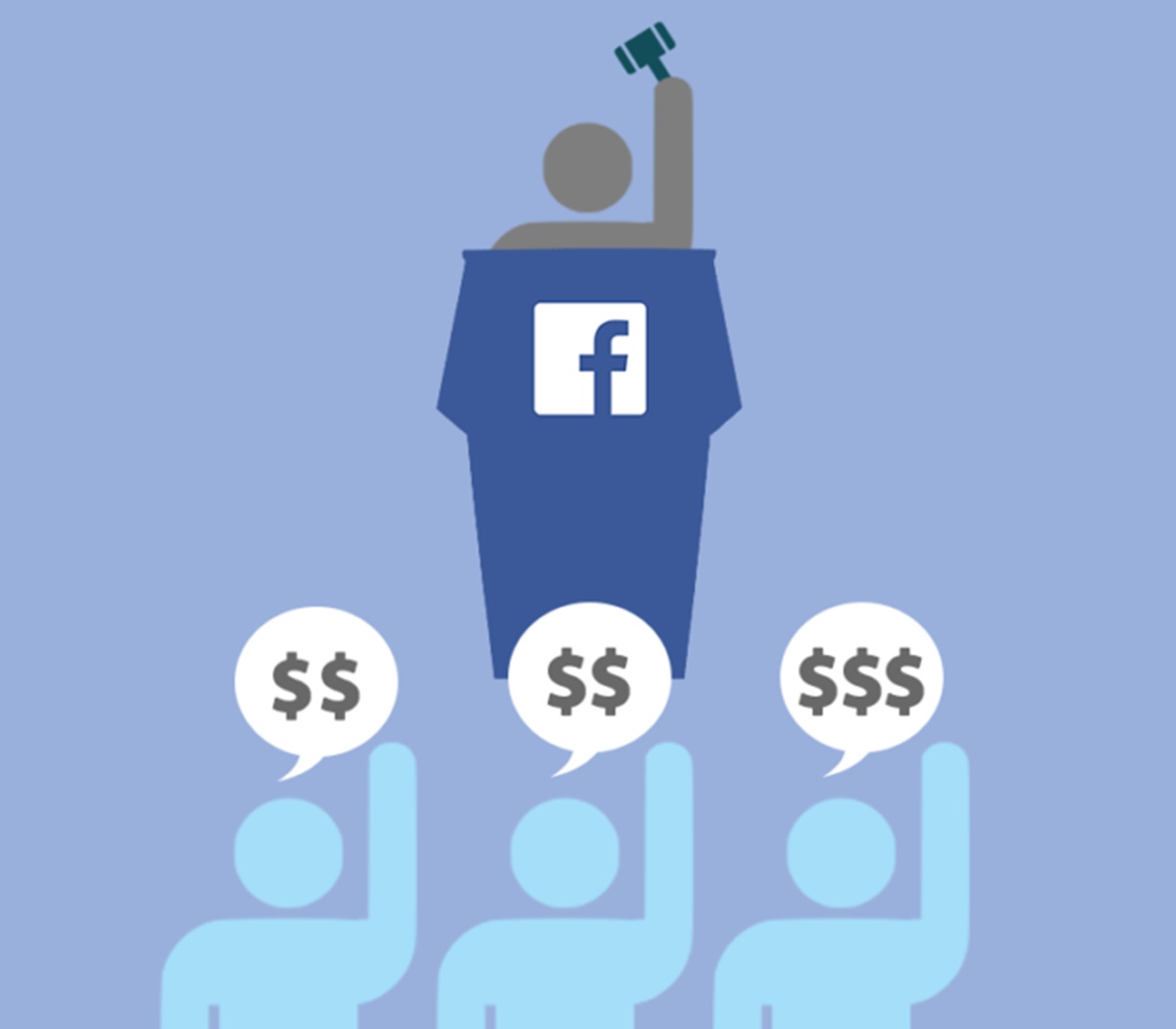
There’s just so much room in people’s Facebook feeds to display advertisements and supported posts. It is especially valid for competitive keyword expressions.
As a result, Facebook runs an auction system where potential advertisers are competing to win the right to run their advertising campaigns. There is also no fixed expense of running Facebook ads. This all depends on who else is going to advertise.
You start the cycle by setting a regular budget. This is really significant. Without it, you ‘d be in danger of having a profitable campaign that could cost you much more than you can afford. You can select whether you want to start your campaign today and run it on an ongoing basis, or whether you want to run a campaign between fixed start and end dates.
How the Facebook Ads Auction Works
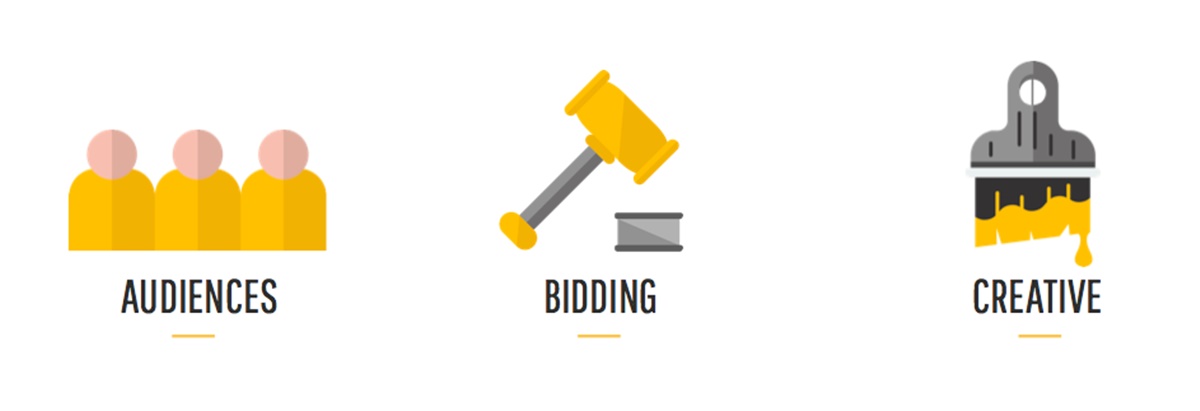
Facebook does not just give the highest bidder advertising space.It wants to ensure that its users still enjoy the best experience. As a result, Facebook selects winning bids based on ads that they believe offer the most overall value. It matches advertisers who reach out to people who are open to their advertising, with consumers who will be interested in seeing the advertising.
Billions of ad auctions take place every day behind the scenes on Facebook. Indeed, an auction takes place every time anyone opens their feed. Facebook weighs up all competing slot bids and chooses the ad that it believes offers the best value to the target customer.
Facebook analyzes three factors:
- How relevant an ad is to the target audience
- The level bid by an advertiser
- The likelihood that the audience would take the target action optimized for by the ad
On the basis of these variables, Facebook scores each ad. They offer advertising slots on any feed to those ads with the highest ratings. It ensures that you don’t have to make the highest bid to secure a slot for your ads. They’ve just got to be perfect for the audience.
If your ad gets the top score for a slot, Facebook will decide what you’re being charged based on what everyone’s been bidding. This means that you’re not actually going to have to pay the full bid price.
Significant Elements Affecting the Cost of Your Facebook Ads
Your Bid Price
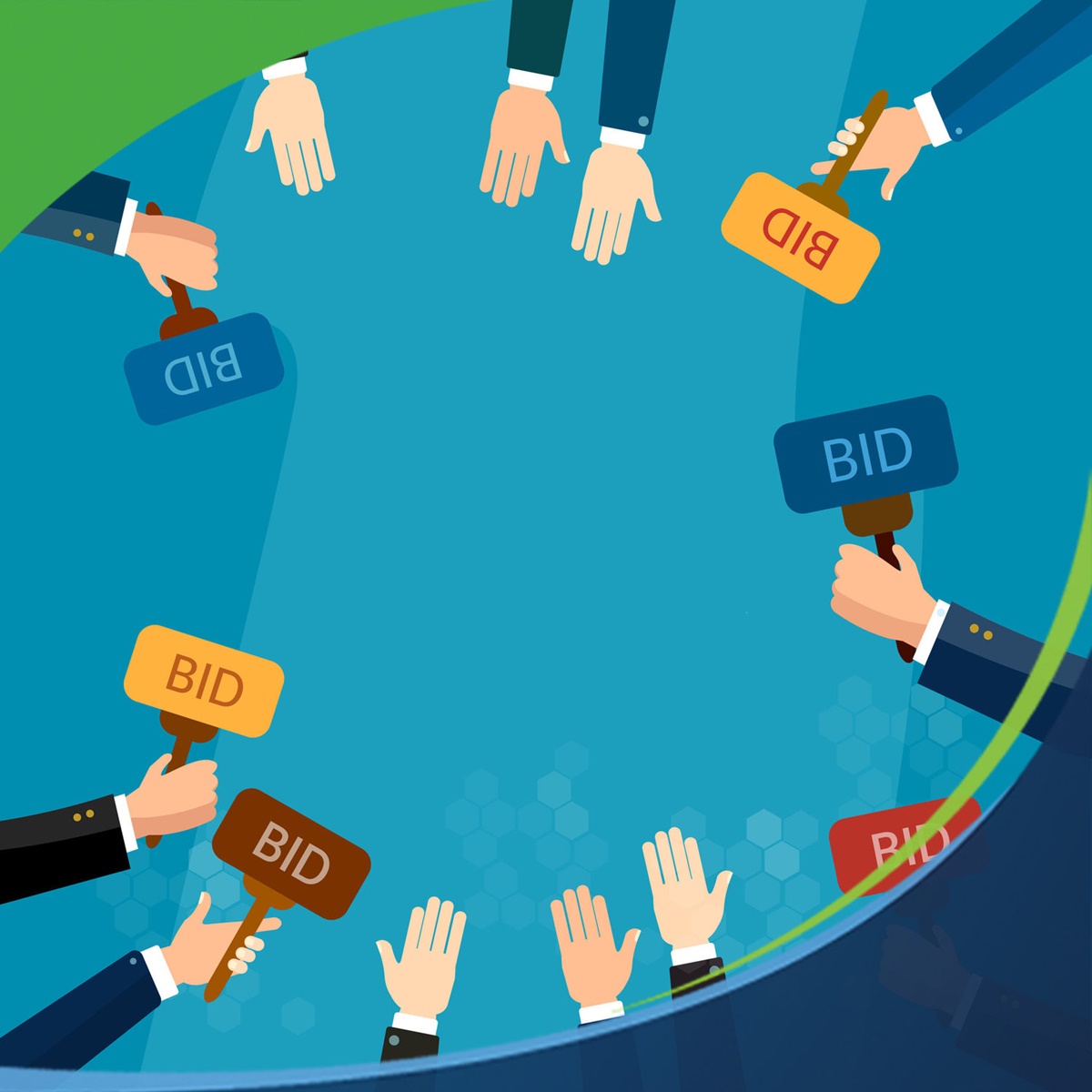
When you determine your bid amount, you can either select Automatic or Manual Process. If you opt for Automatic, Facebook will select a bid that will help you get the most ad slots at the best price. This means that Facebook is attempting to invest the total budgeted sum to optimize the performance.
You can opt for a manual if you prefer to set a limit on how much you are willing to pay for individual results. For example, you could limit your bid to $4 per click. Note, if you set a very high manual cap, you ‘re unlikely to end up paying that number. Facebook changes the auction to ensure that the winning bidder spends no more than they have to pay.
Your Target Audience

There’s no point in trying to push your ads to everyone. No matter what your product is, some people will always be more relevant to your campaign than others. Even big companies like MacDonald’s are restricting their advertising to the kinds of individuals who are most like their regular customers.
Often, you need to know that you’re going to have significant competition in certain niches. The more pressure you face, the higher the cost of the ad. You can pay rates like $50 for specific legal terms. The larger the consumer network, the more businesses, of various kinds, that compete with you for advertisement slots.
Of course, target audiences are a critical factor when it comes to your advertising, there is little point in advertising to a cheaper, but irrelevant audience if you believe that your best market is too expensive to target. Some relevant audience factors that may affect your advertising costs include:
- Location
- Gender
- Age
- Their interests
- Language
- Connections (for instance, have they already liked your Facebook page)
The Relevance and Quality of Your Ad
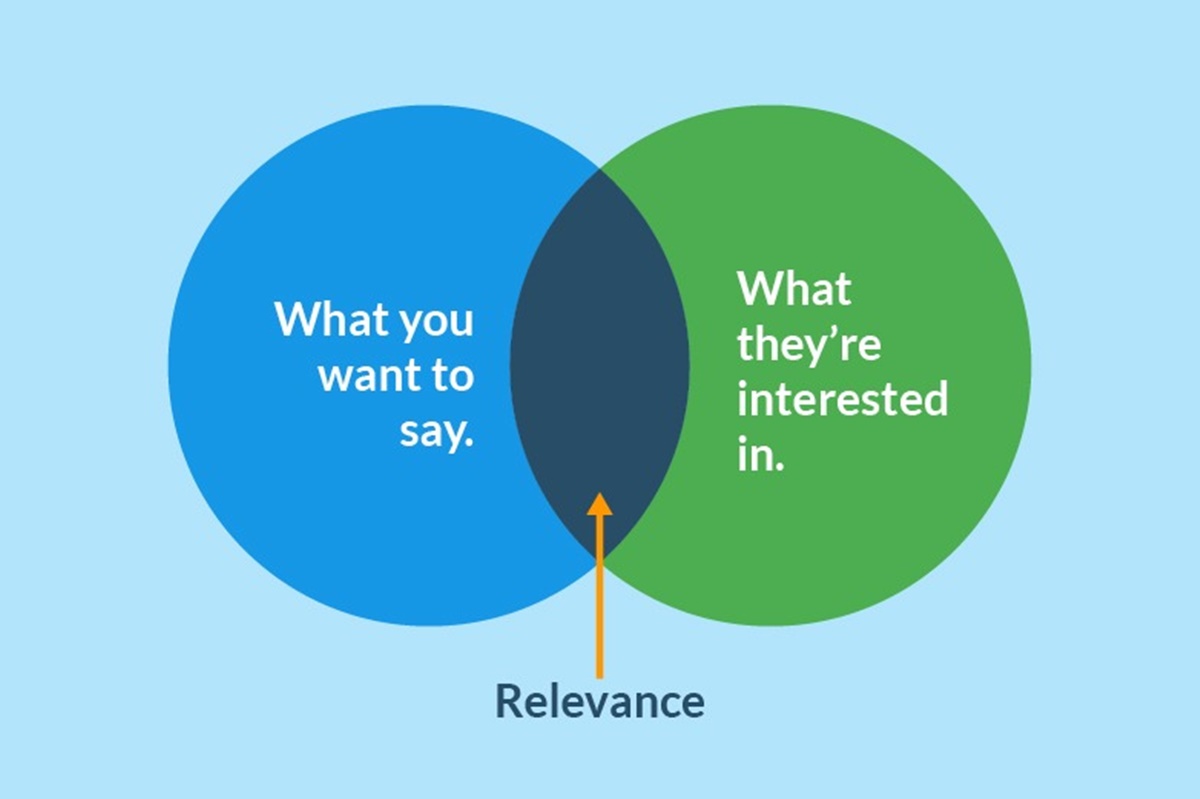
Recall those “in your face,” surprising, annoying ads that you often have to endure on TV. They bother you there, but there’s little you can do about it apart from changing the channel from the program you want to watch. Things are different on the Internet. If Facebook bombs you with annoying low-quality ads, you can shut Facebook down and move to another website with little thought or concern.
Facebook doesn’t want to do so. And they are deterring advertising that they find to be of low quality. Facebook doesn’t simply ban poor ads, but it penalizes poor ads with higher prices, lowering their weight in the Facebook ad bidding process.
Facebook provides you a Relevance Score of between 1 and 10 for every ad you ‘re running. This is a guide to how important your ad is to the target audience (10 being extremely significant).
The higher your relevance score is, the lower the cost you face to place your ad. You can see the Relevance Rating in your Facebook Advertising Manager. It’s worth taking note of this, to give you a guide to help you boost your advertising in the future.
Your score of relevance is fluid. It changes whenever people interact either in a positive or negative way with your ad. Click-through rate also determines your relevance. The more people you click on your ad as a proportion of clicks, the more important your ad is to your audience on Facebook.
Facebook gives ads an Estimated Action Rate. This is their best guess of how likely a particular person will take the action that you are optimizing with your ad. When Facebook tries to determine how important your ad will be to a particular user, it looks at the past actions of that user. For example, if you want a person to click on your ad, Facebook will analyze people to see if they have clicked on ads like yours in the past.
Factors that are seasonal
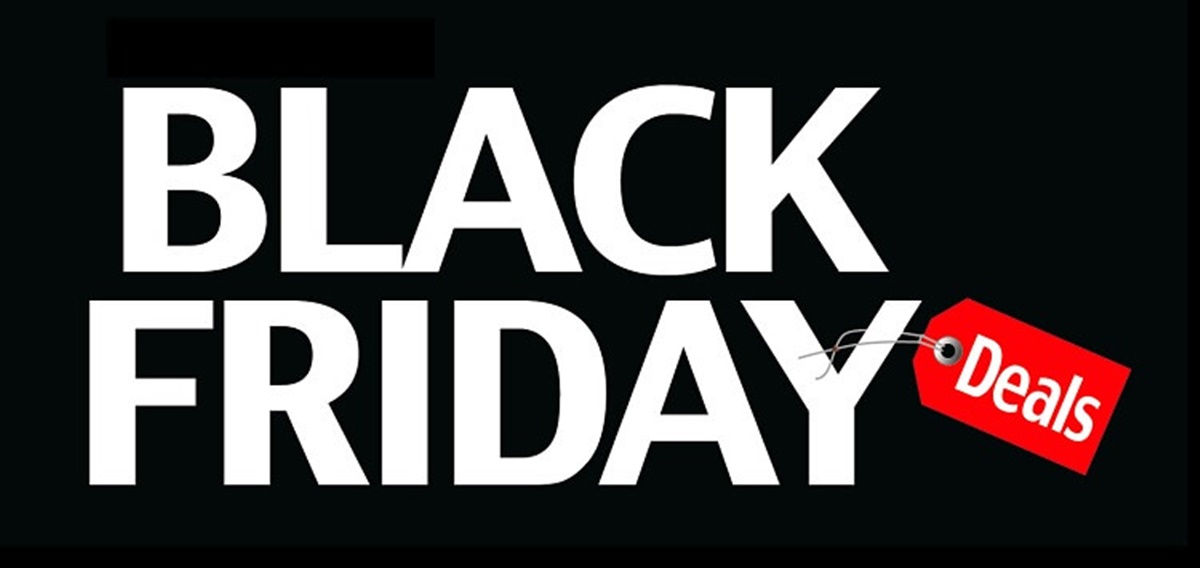
Often the expense of your Facebook advertising may depend on the actions of others. There are periods of year when there is a tremendous demand from companies to put ads on Facebook.
Conversely, the time of the year is quiet. Like all advertising markets, advertising costs will rise in times of peak demand and fall in the quiet moment when Facebook wants to encourage advertisers.
This will usually be close to the seasonal times of your company. Your peak sales periods will most likely also be your competitors’ peak sales periods too. And you’re both going to want to advertise at the same time.
Particularly, you should expect to pay more if you intend to advertise for:
- Black Friday / Cyber Monday
- Thanksgiving Day (in the USA)
- Christmas
- New Year’s Eve and Day
- Boxing Day Sales
The placement of ads
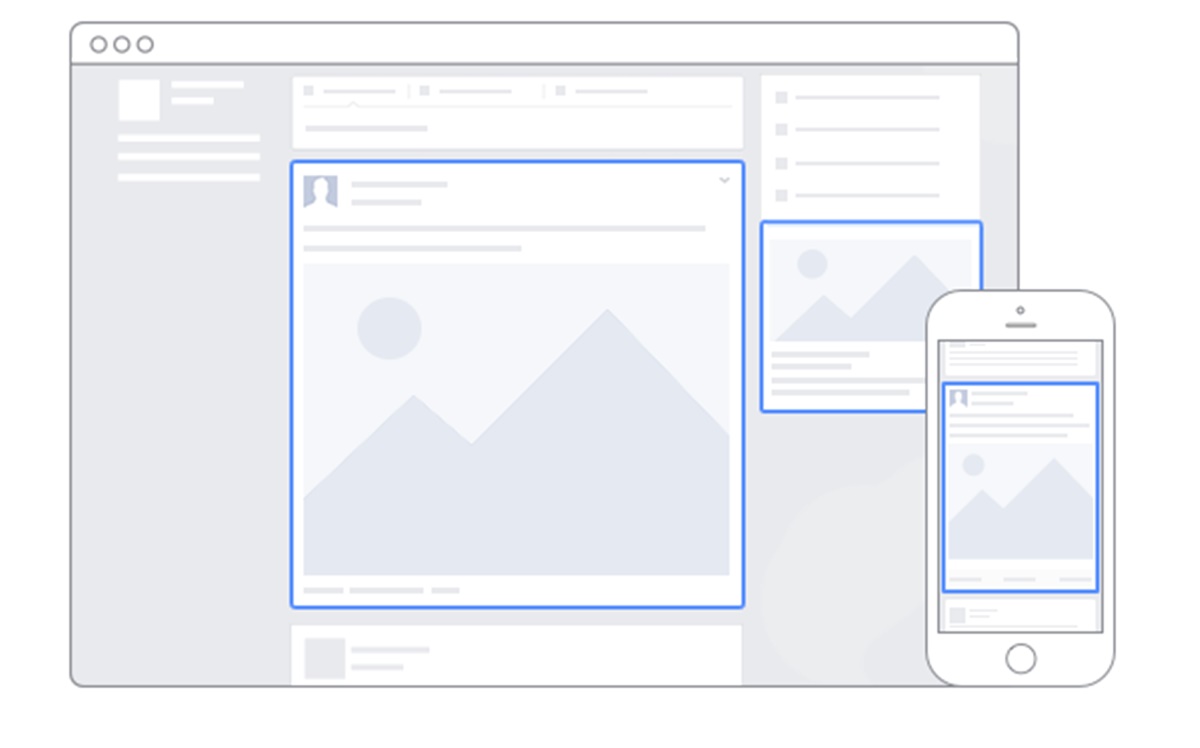
When it comes to Facebook ads, ad placement affects the total advertisement costs. They offer you the following ad placement areas and recommend that you allow them to place your ads in all of these places to reduce your average cost:
- Facebook desktop News Feed
- Facebook mobile News Feed
- Facebook desktop right column
- Instagram Mobile News Feed
- Messenger
- Audience Network
You’ll want to make sure your audience uses Instagram and Messenger before you decide to put your ads there.
Optimization options
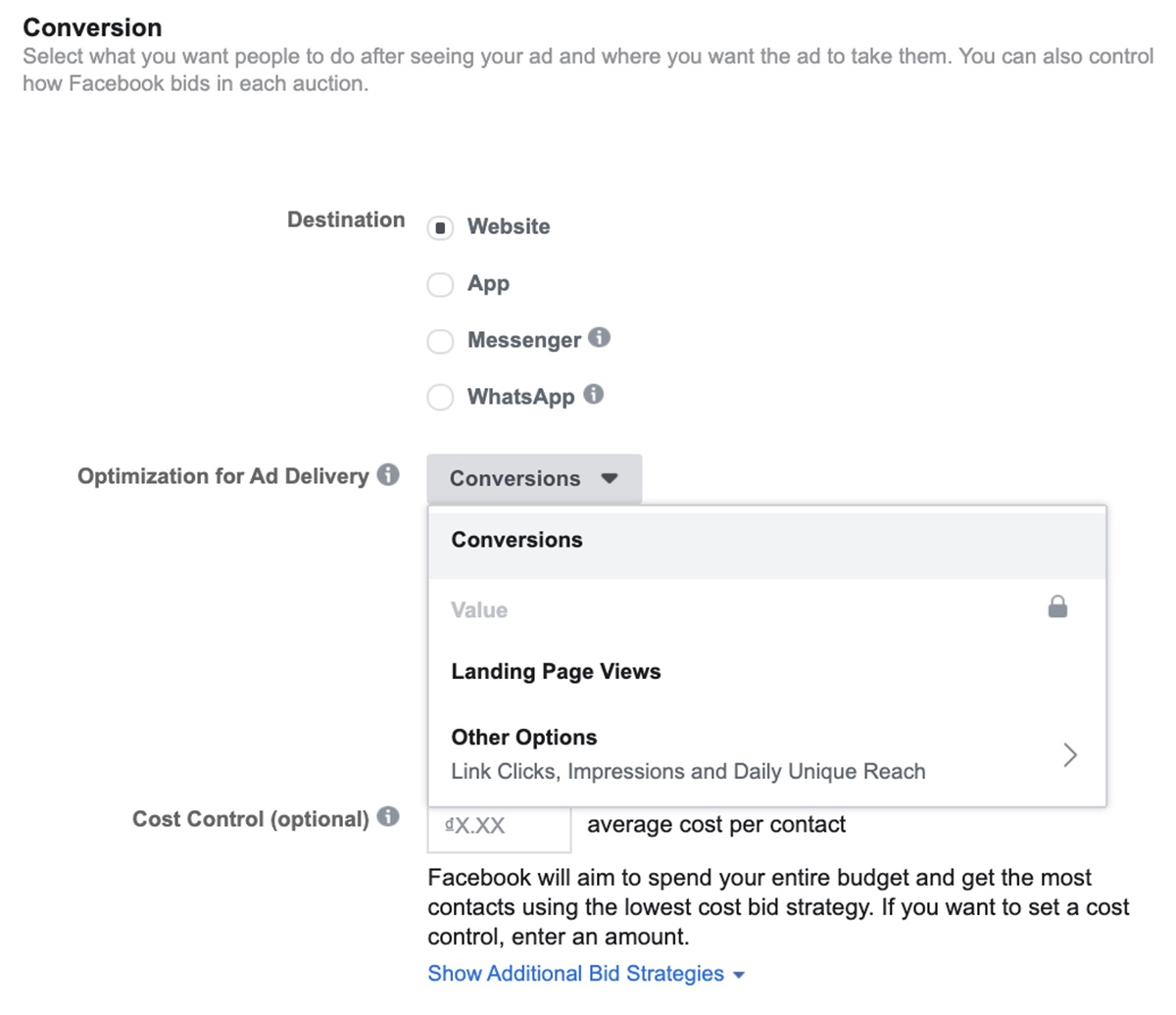
When you set up your ad, if you select “Display Advanced Options” under “Budget & Schedule,” you will find an choice called “Optimization for Ad Delivery.” Your option of optimization here will affect who your ads are seen on Facebook. For example, if you choose to optimize your clicks, Facebook will show your ad to people who are most likely to click on the ad.
This may affect the cost of your ad because the actions taken on your ad will affect the relevance score of your ad and the estimated rate of action (see points two and three above). If your ad is not optimized for the result you want, Facebook may not show your ad to people who are most likely to act positively on your ad, and you might even end up paying more for the results.
AdEspresso experimented with a variety of optimization options and found that optimization choices could affect the cost of the result that you are optimizing. For example, if you want to optimize clicks, you ‘re usually better off selecting “Link Clicks.”
8 Strategies to Reduce Your Facebook Ads Cost
Now that you understand the main factors at play, let ‘s look at how you can raise your Facebook advertising costs. While there are many factors beyond your control, these eight strategies are sure to help you get a higher return on investment ( ROI).
1. Split Test
Split testing is the practice of running the same ad campaign twice with a small change in test performance. In the following example, you can see that Gymshark is running two ads that have the same copywriting but different images.
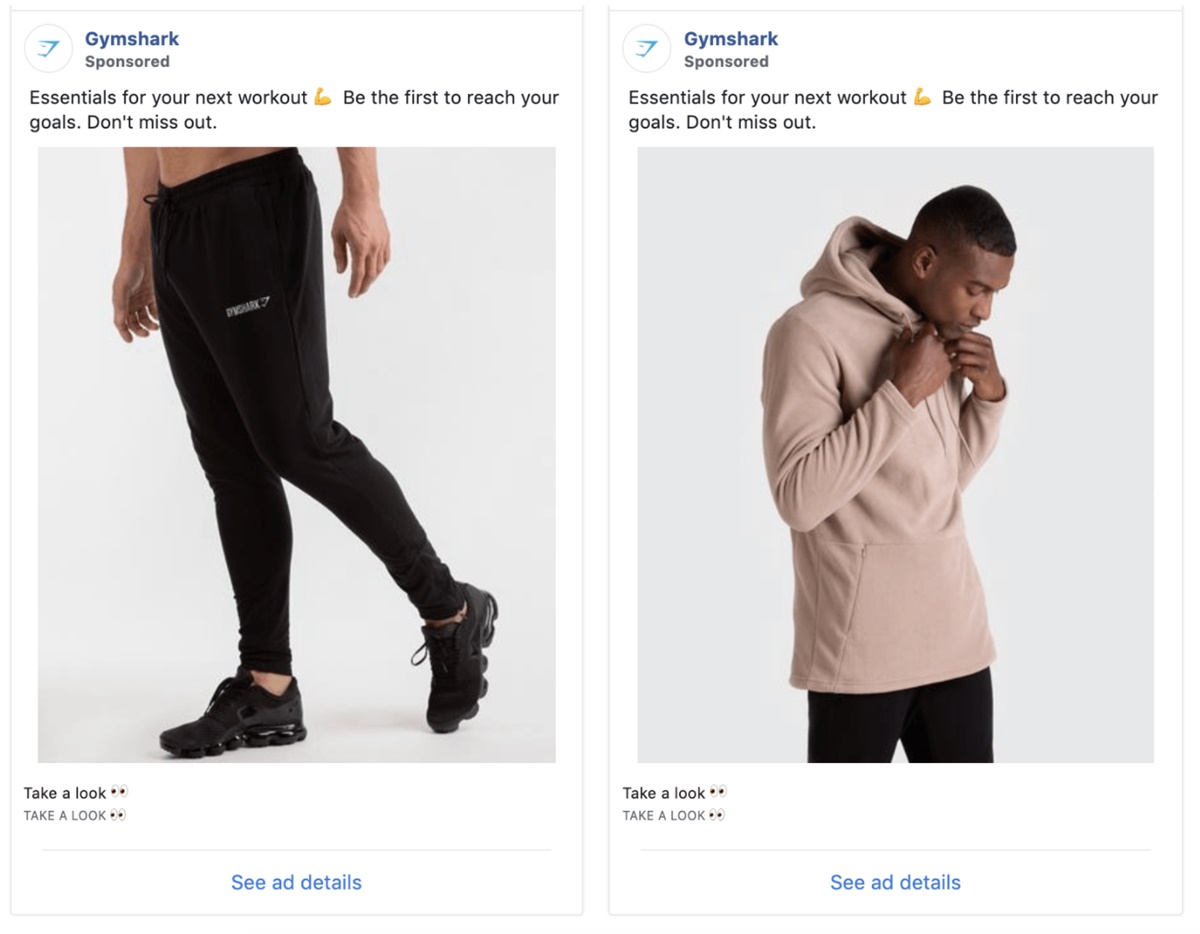
This means they ‘re doing a split-test on the image to see which one performs best. Split-testing helps you to continuously improve your ads so that their performance increases over time. This will lower your Facebook advertising costs by raising your investment return.
Far too many advertisers are creating a great Facebook ad campaign and moving on. Don’t do it. Some companies have managed to reduce their Facebook advertising costs by 96 per cent just by altering the copy! Put this another way, there’s really no way to say what works best until you try it out.
Plus, the Facebook Ads Manager makes it simple to run a split-test. Use the “Create split test” toggle in the “Traffic” section. Facebook will then divide your budget equally between your two ads and allow you to measure their performance. Ideally, you’ll want to test each part of your ad on an individual basis, but start by testing your image and text.
2. Focus on One Objective at a Time
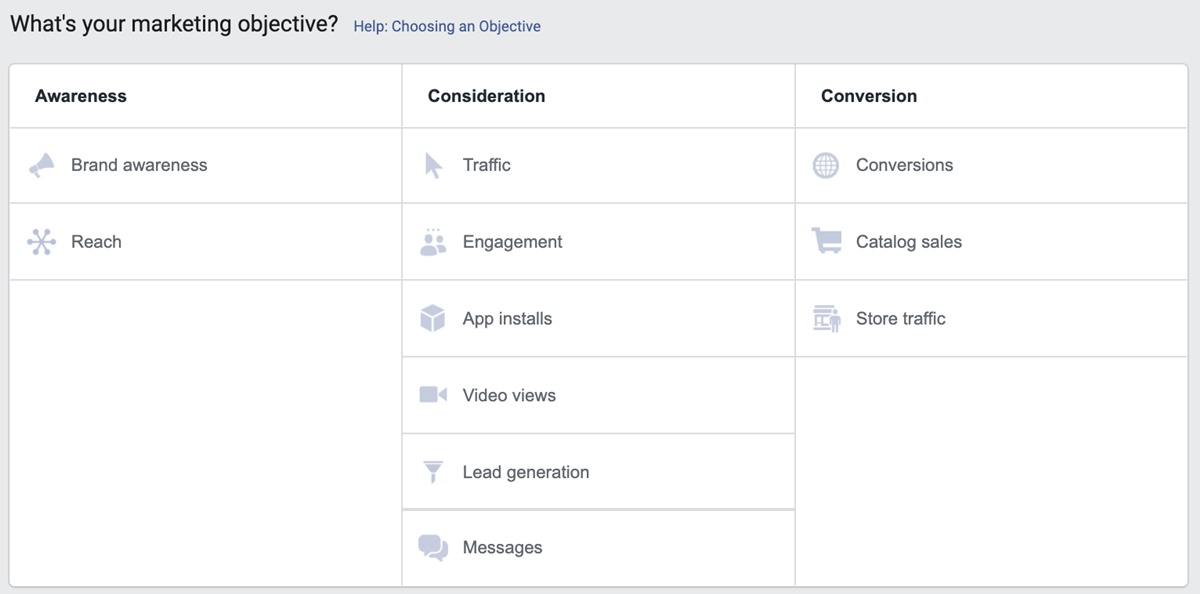
When you start creating a Facebook ad, the first thing you need to do is to choose an objective. Whatever you choose, make sure your entire ad campaign is in line with your goal. Trying to mix two objectives into one ad is not going to get you more for your money. Actually, it’s almost certainly going to increase your Facebook advertising costs.
Why is that? It’s because each objective has a different function and requires different messaging, target audiences, copying, and images. You need to keep your advertising focused on the laser. When you concentrate on one target at a time, you can make sure that your picture, copy, audience, and call-to-action hits the spot and converts.
If you want to target more than one goal, create multiple campaigns and ads. At the end of the day, this would reduce the Facebook advertising costs.
3. Maintain a High Relevance Score
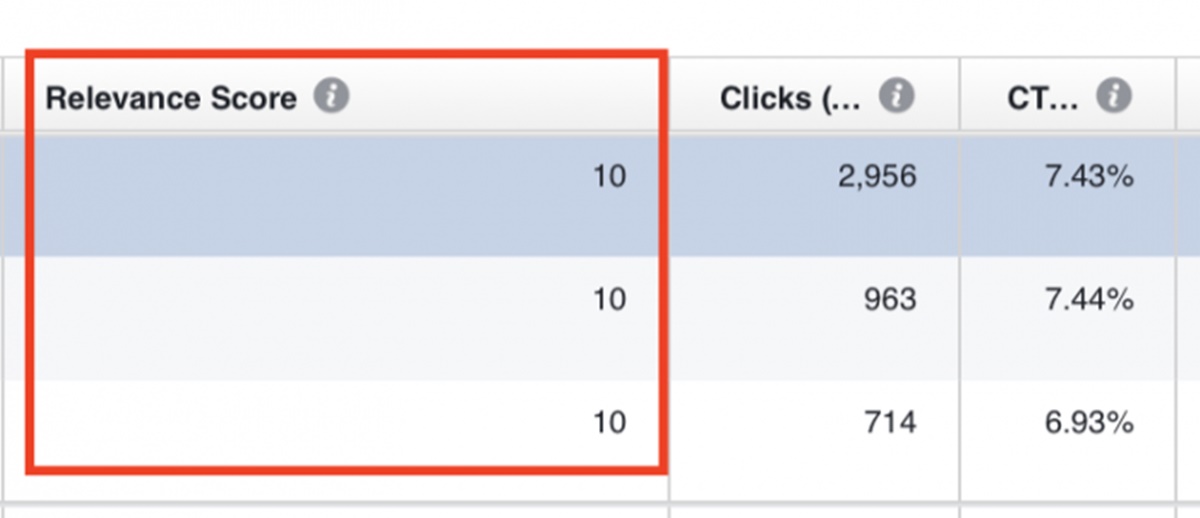
The Relevance Score indicates how much your ad resonates with your target audience. High relevance score means that your ad receives positive feedback and a healthy level of engagement, clicks and conversions.
High score ads will lower the cost of your Facebook advertising. The key here is to create great ads that resonate with your target audience.
4. Keep an Eye on Frequency
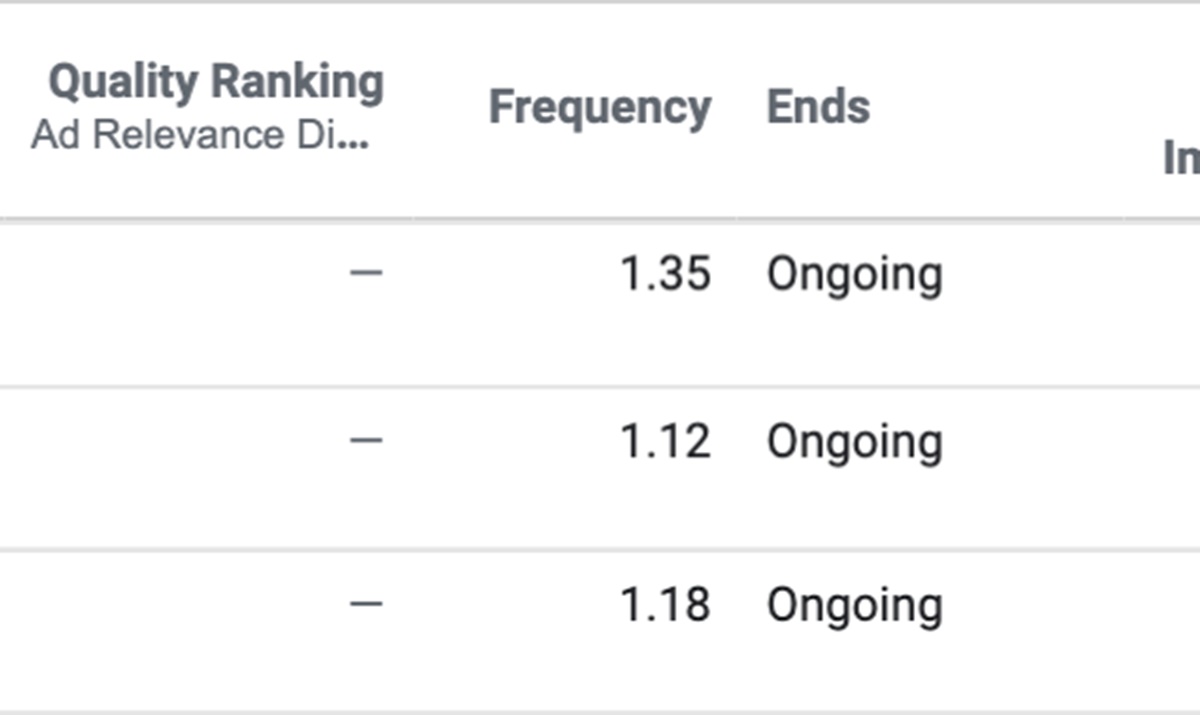
Facebook rates every ad on “Frequency.” This metric tells you how much your ad is seen by the same person. If the same people see your ad several times, one of the two things is going on: You are not reaching new people The audience you’re reaching keep seeing your ads over and over but aren’t converting
The higher your level of frequency, the fewer interaction, clicks, and conversions you get. As a consequence, your Facebook advertising costs will go up. It’s true that some people would need to see your ads a couple of times before they click and convert. However, interested shoppers typically only need to see it once or twice.
So aim to keep your ad frequency down to or below three. When your frequency score is too high, restrict, change, or pause the campaign.
5. Keep Your Ads Fresh
You need to update your ads or create new ads on a regular basis. Apart from helping to maintain low-frequency scores, this is just an effective practice, because no matter how great your ad campaign is, it will inevitably lose its effects.
However, this doesn’t mean that you have to start from scratch every time. You can keep the same audience, but you can change your offer, image, and copy. What’s more, take the lessons you’ve learned from split testing and add them to your latest promotional campaigns.
Let’s look at the example of the Quad Lock sports phone mount business. In the ads below, the same copy and call-to-action are used, but the visuals have been changed.

6. Select an Audience for Each Specific Campaign

Each campaign should have a specific target audience. In other words, you’re not supposed to include your entire target audience in every campaign you ‘re running. This is going to drive up the Facebook advertisement price. Why is that?
Well, consumers will be at various points in the digital marketing enclosure, so they will need specific ad messages. By categorizing your target audience into sections and subsections, you will be able to create highly targeted messaging, offerings, and call-to - action.
The outcome? Better ad efficiency – and lower Facebook advertising prices. Say , for example, that you wanted to run a campaign to communicate with brand-new potential customers. It would be inefficient to show these ads to people who already like your Facebook business page.
Instead, you can exclude these users, and instantly your target market is far more likely to resonate with your post. Facebook offers a multitude of targeting options – put them to use!
7. Use Retargeting and Remarketing Campaigns

Retargeting and remarketing are techniques that allow you to advertise in some way to people who have already been exposed to your brand.
Retargeting is the displaying of ads to prospects based on their browser cookies (using Facebook’s pixel) Remarketing is the serving of ads to prospects based on their email interactions.
In other words, whether anyone has visited your website or signed up to your mailing list, they can be viewed on Facebook. Such customers are already acquainted with your brand and goods, and there is already a basis for good consumer relationships.
As a result, re-targeting typically results in a higher number of clicks and conversions – and lower Facebook advertising costs. Facebook also provides a number of remarketing options. You can display ads to people who like your Facebook page, follow you on Instagram, sign up for your mailing list, and more.
8. Cap Your Bid
This is a simple way to keep the Facebook advertising costs down. When you know you don’t want to pay more than $1.00 per commercial, you can only cap your bid to make sure it doesn’t happen.
Obviously, this means that you might lose out on potential ad placements. However, if you have a marketing budget plan and need to keep your Facebook advertising costs under control, capturing your bid is the right way to go.
Read more:
- 13+ Best Shopify Facebook Ads Apps
- Shopify Facebook Marketing: How to Market your Business
- 8+ Best Shopify Facebook Pixel Apps
Final Words
And that was a long post about the expense of Facebook Advertising. Thank you very much for sticking with me during the post! Facebook Ads cost is a big issue, and I think we’ve barely scratched the surface here. It would be awesome to hear your experiences, too! Feel free to share the comments below; I ‘d love to join the conversation.
New Posts

How To Set Up Google Analytics 4 For Your BigCommerce Store






